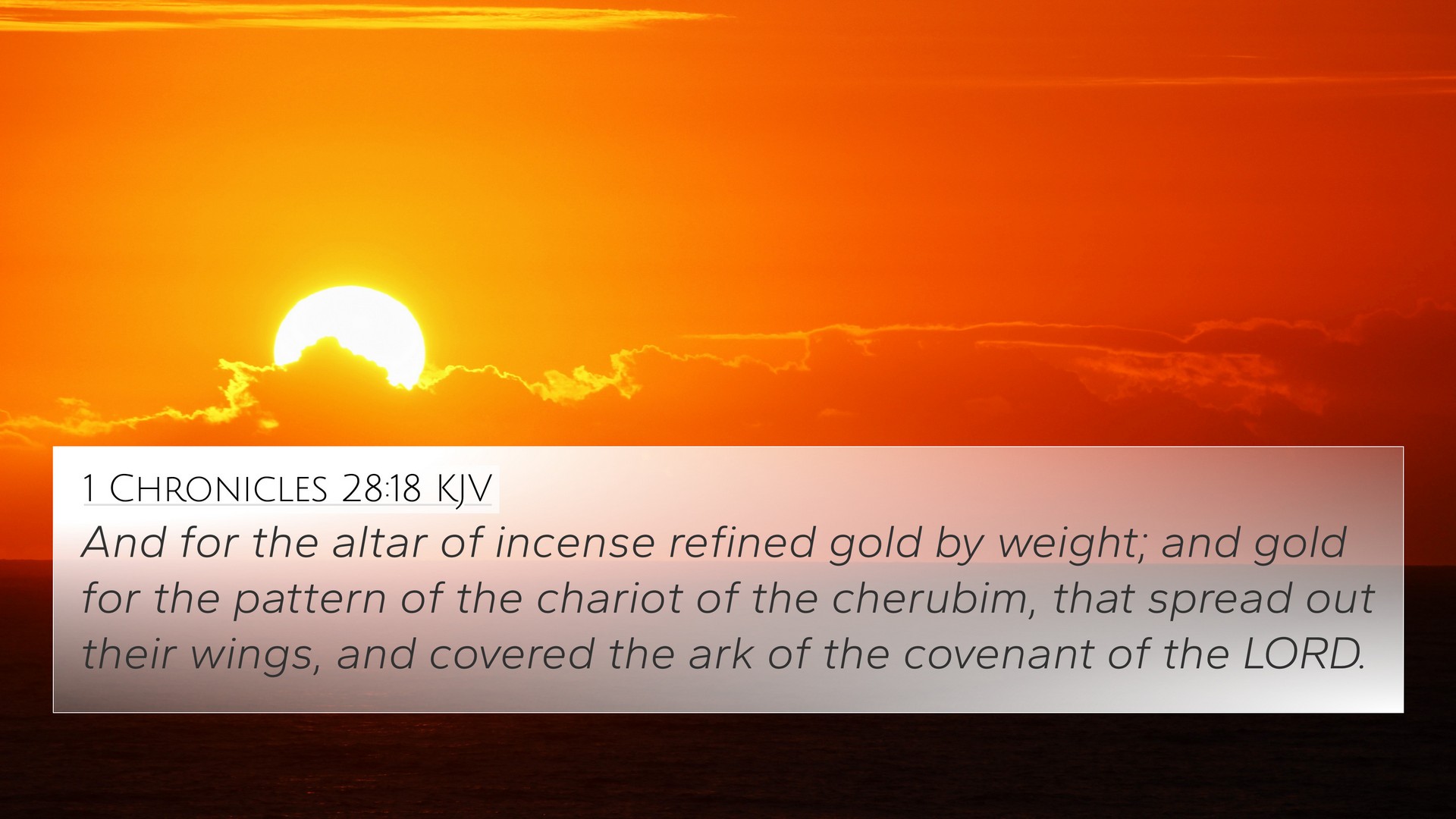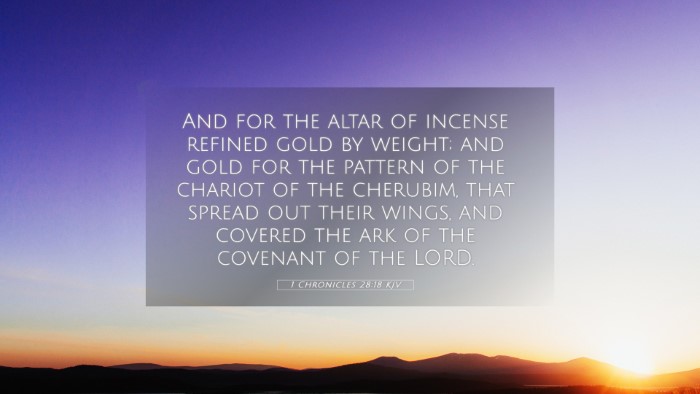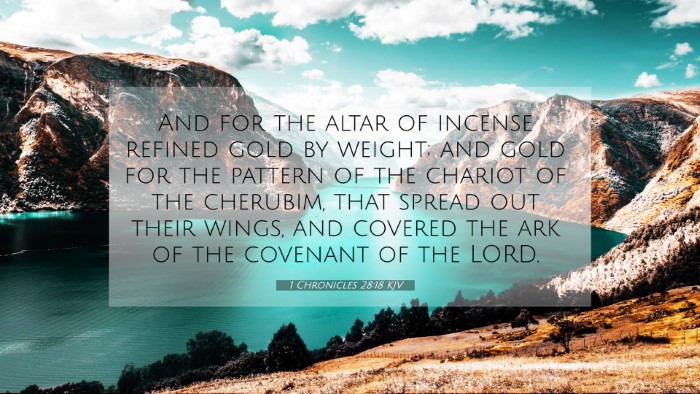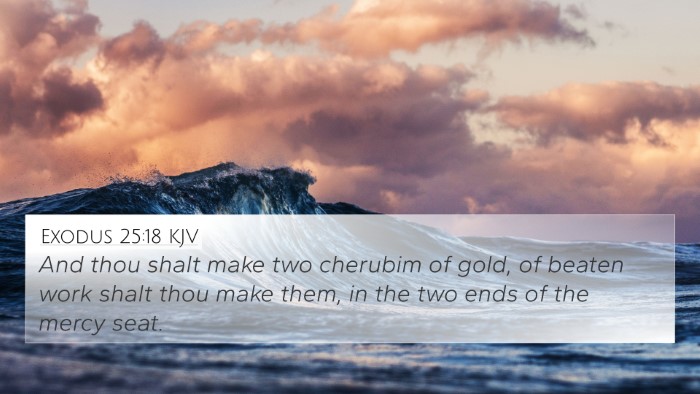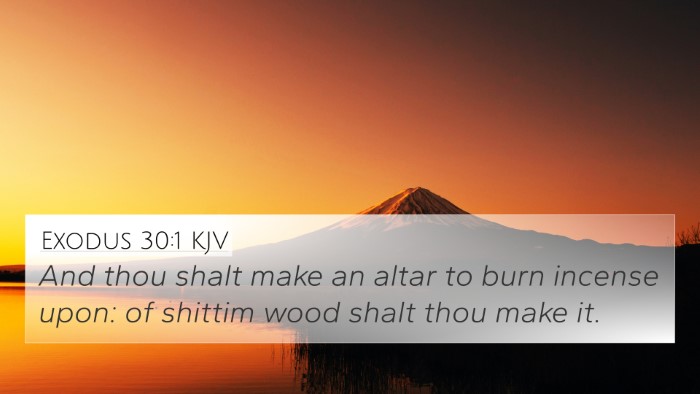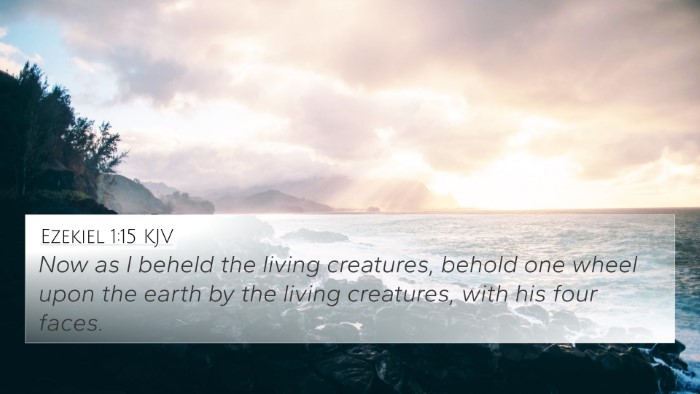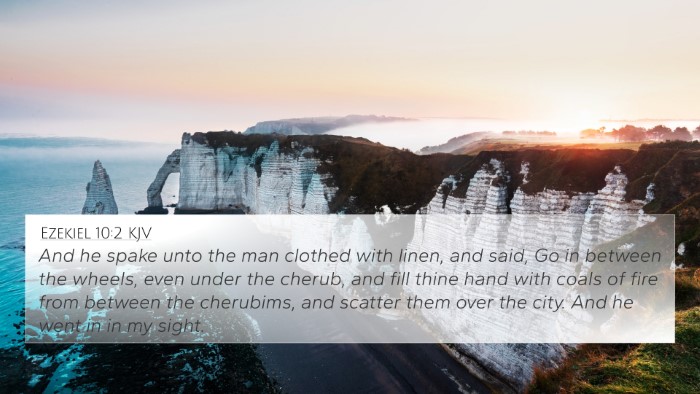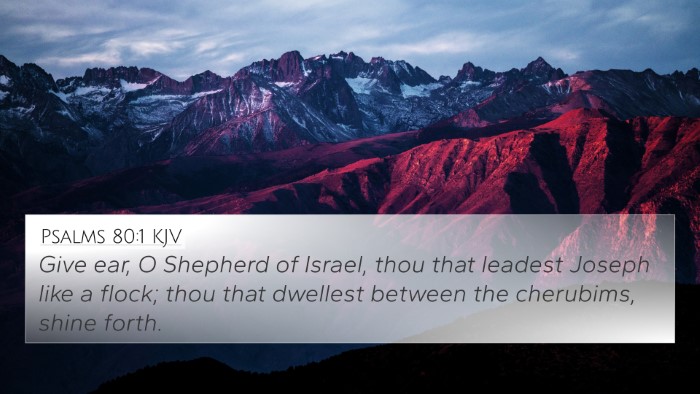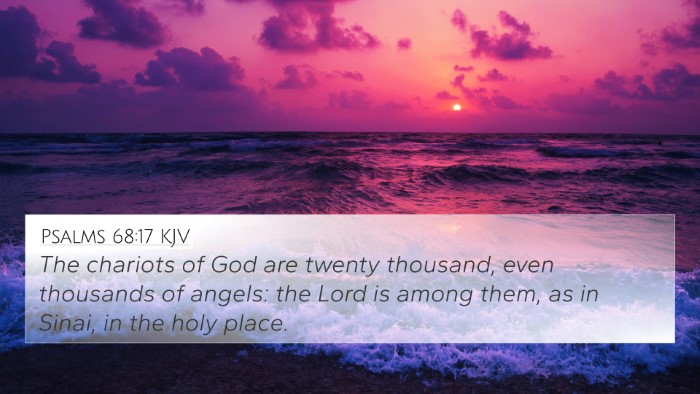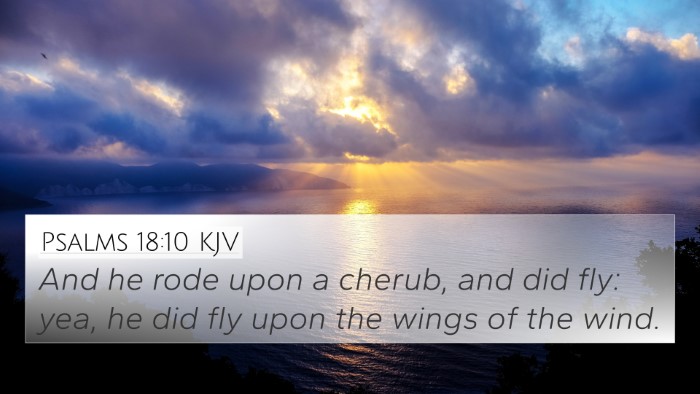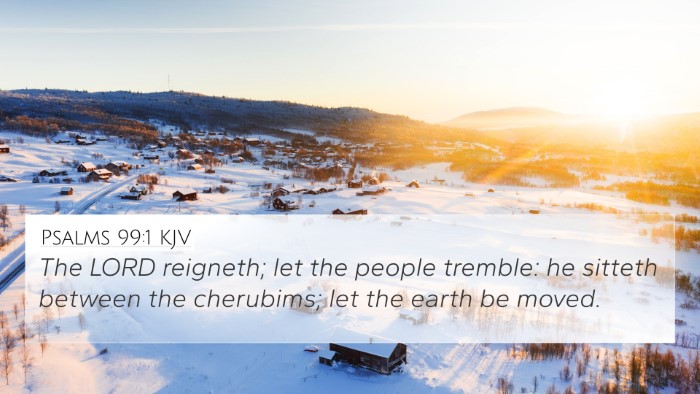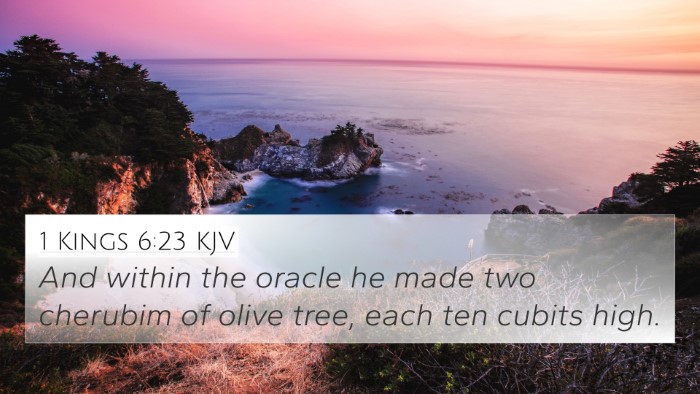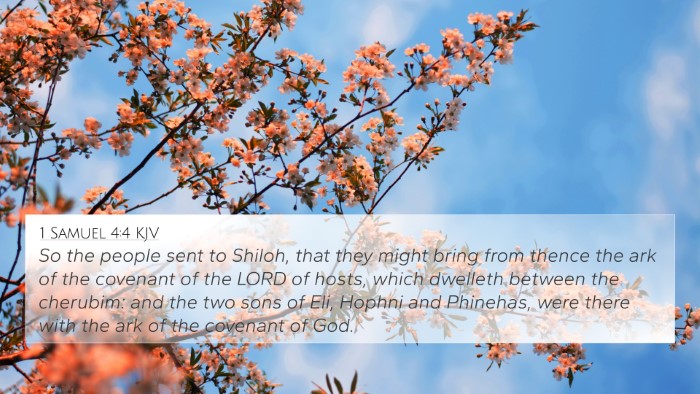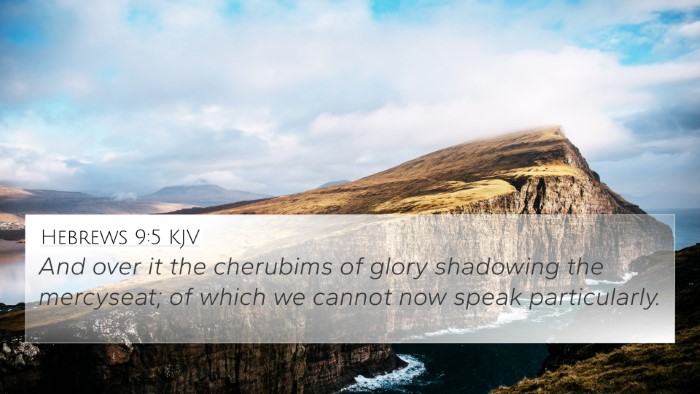Understanding 1 Chronicles 28:18
1 Chronicles 28:18 states: "And for the altar of incense refined gold by weight; and gold for the pattern of the chariots of the cherubims, that spread out their wings, and covered the ark of the covenant of the LORD."
This verse falls within the broader context of King David's instructions to his son Solomon regarding the building of the temple. David meticulously details the materials, dimensions, and the divine inspiration behind the temple's construction, illustrating the seriousness with which God’s dwelling place should be treated.
Key Themes and Insights
- The Divine Pattern: The verse speaks to God's precise design and inspiration for the temple, emphasizing the importance of following divine directions.
- Holiness of Worship: The refined gold for the altar signifies purity and the reverence required in the worship of God.
- Significance of the Ark: The mention of cherubim reminds us of God’s presence and the sacredness associated with the covenant.
Commentary Insights
When exploring the insights from public domain commentaries, we derive a more profound understanding:
Matthew Henry's Commentary
Matthew Henry emphasizes that the descriptions of the materials are intended to illustrate the glory and attention to detail that should be present when building God's house. He advocates for the finest materials, as they reflect the majesty of God. Furthermore, Henry notes that the cherubim symbolize God's protective presence and the seriousness of entering into God's holy space.
Albert Barnes' Notes
Albert Barnes elaborates on the use of refined gold, suggesting it indicates a desire for excellence and beauty in worship. He interprets the chariots of cherubims as a reflection of divine power and the heavenly connection with God's presence. Barnes also positions the altar of incense as crucial for worship, representing prayers ascending to God.
Adam Clarke's Commentary
Adam Clarke points out the artistry involved in constructing the temple, mentioning that every detail matters because it is for God. He acknowledges the importance of the incense altar, linking it with prayer and the sense of approaching God in a sacred space. Clarke also highlights the nature of the cherubims, comparing their significance to the angelic beings that serve around God's throne.
Cross-References
1 Chronicles 28:18 correlates with several other scriptures, showcasing its thematic connections:
- Exodus 30:1-3: Instructions for making the altar of incense.
- 1 Kings 6:23-28: The description of the cherubim in the temple.
- Psalm 99:1: The Lord reigns; let the peoples tremble. He sits enthroned upon the cherubim.
- Hebrews 9:4: Reference to the Ark of the Covenant, which contains the golden urn holding the manna.
- Revelation 8:3: An angel with a golden censer stands before the altar, offering incense.
- Exodus 25:18-20: God's instruction regarding cherubim over the mercy seat.
- 2 Chronicles 3:10-13: Further details about the cherubim in Solomon's temple.
Connections Between Bible Verses
The thematic connections among these verses highlight a consistent dialogue about God's presence, worship, and holiness in both the Old and New Testaments.
Comparative Bible Verse Analysis
Through comparative analysis, one can draw parallels between 1 Chronicles 28:18 and other instances of divine instruction, such as:
- How the instructions given to Moses about the tabernacle (Exodus 25) mirror the directives for the temple.
- The significance of worship involving pure offerings as described in Malachi 1:11.
- The representation of God's throne room found in Isaiah 6 and Revelation 4, where cherubim are depicted around God's presence.
Tools for Bible Cross-Referencing
To deeply engage with the themes presented in 1 Chronicles 28:18, one can utilize various tools for cross-referencing:
- Bible Concordance: A tool to find verses based on keywords.
- Bible Cross-Reference Guide: Helps identify passages that relate to specific themes or topics.
- Cross-Reference Bible Study: Method of exploring themes across different books of the Bible.
Inter-Biblical Dialogue
Understanding 1 Chronicles 28:18 within the framework of inter-Biblical dialogue allows readers to see how the Old Testament's themes resurface in the New Testament context, especially in teachings about worship, prayer, and God's dwelling among His people.
User Intent Keywords
When searching for related verses, one might consider:
- What verses are related to worship in the Bible?
- Find cross-references for themes of God's presence.
- How do the Old Testament instructions connect with New Testament teachings?
Conclusion
1 Chronicles 28:18 serves as a vital verse within the narrative of the temple's construction, emphasizing the reverence due to God’s house and the materials chosen for its creation. By examining commentaries and cross-referencing the verse with related scriptures, we uncover a richer understanding of God's requirements for worship and the sacredness of His presence.
